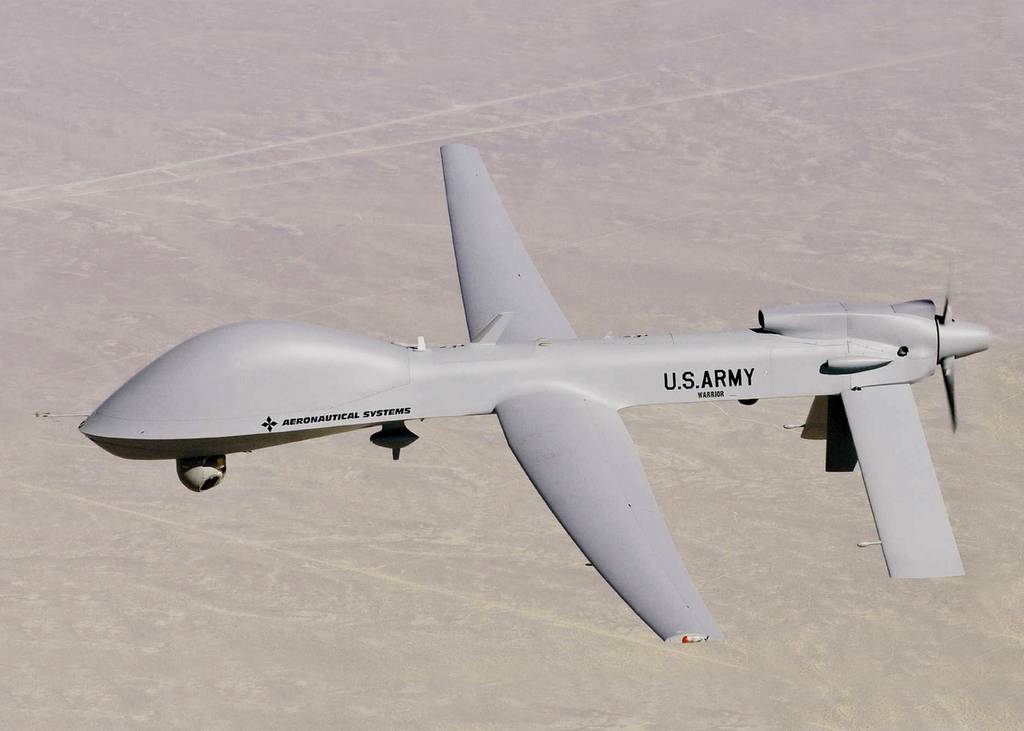AUGUSTA, Ga. — Following the U.S. Army’s decision to cancel fiscal 2022 procurement for its aerial electronic jamming pod, the program’s executive officer said the service is now in a “prove it†phase for the system.
“We’ve got to show that the MFEW [Multi-Function Electronic Warfare-Air Large] capability can operate in a robust environment and potentially on platforms, not just the Gray Eagle, but looking at diversified platform set … and looking for how MFEW will operate before we make a commitment on how we’ll necessarily go after a capability like MFEW in the future,†Mark Kitz, program executive officer for intelligence, electronic warfare and sensors, told C4ISRNET in an Aug. 19 interview.
In its FY22 budget, the Army canceled procurement for the airborne jamming pod mounted to a MQ-1C Gray Eagle, but it proposed $12 million research and development funds.
“I think over the next year, the Army is going to get some data and learn how this MFEW capability will enable how we want to operate in the future, and I think that data will then inform how we go forward with an MFEW-like capability,†Kitz said.
Officials have explained that the project the only program of record that provides brigade commanders with aerial electronic warfare and radio frequency-enabled cyber effects.
It also is one piece in a family of forthcoming electronic warfare systems that Army is working to deliver within the next few years to soldiers.
“All of our capabilities … when used in tandem — TLS-BCT [Terrestrial Layer System-Brigade Combat Team], TLS-EAB [Terrestrial Layer System-Echelons Above Brigade], MFEW Air Large — are all integrated to provide that EW and those cyber effects,†Willie Utroska, deputy project manager for electronic warfare and cyber, said during an Aug. 19 TechNet presentation.
The Army has included the system in multiple exercises — including Edge21, Multi-Domain Operations Live 21 and Forager, the nonlethal part of the Defender Pacific exercise — and is slated to participate in Project Convergence 21 ahead of a more robust operational test.
“In FY21 the program demonstrated performance that not only met design goals, exceeded requirements,†he said. “These near-term decisions and demonstrations that are ongoing, we’re collecting that body of knowledge, that body of evidence, so we can go back to our senior leaders and request the support, production decisions or restoring funding for production.â€
While requirements explicitly state was designed to be integrated aboard Gray Eagles, officials stressed that the MFEW pod is platform agnostic.
It has flown on fixed-wing platforms in the past as part of testing, but officials declined to say if it might be outfitted to a different platform in the future.
One thing the Army is considering is what units might use MFEW. Initially, it was designed for combat aviation brigades. Now that might expand.
Kitz said the Army is working with the Multi-Domain Task Force in the Pacific, which has significant interest.
“Absolutely looking at different units, different operating environments, what type of range sensing can we get, what type of range and target types can we get, delivering attack effect, are there cyber capabilities that we can affect,†he said. “Assessing that capability will be key for any sort of future investment that we want to make in this capability, and, hey, it may prove out perfectly and it may prove out that those units absolutely need it, and then we’ll make a smart procurement decision from there.â€
Mark Pomerleau is a reporter for C4ISRNET, covering information warfare and cyberspace.








